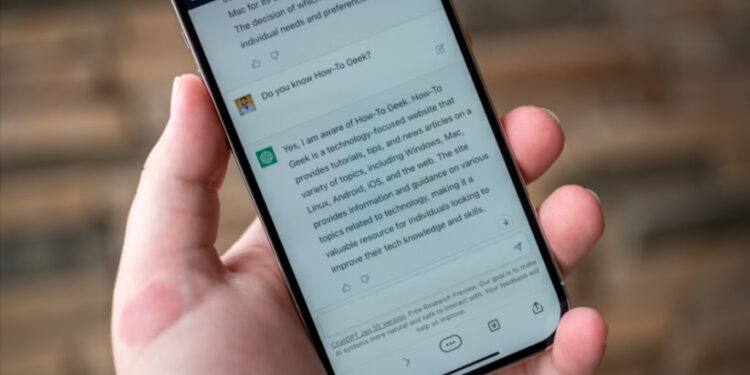Ever wondered how ChatGPT crafts those detailed, human-like responses in just seconds? Or how large language models (LLMs) generate vast essays, write poetry, or even debug code? Beneath their user-friendly interface lies a world of intricate technology, algorithms, and training processes.
Large language models like ChatGPT represent the frontier of artificial intelligence (AI), but understanding what makes them tick doesn’t require a computer science degree. This article will take you behind the scenes, explaining—in simple terms—how these models function.
By the end, you’ll have a clear understanding of the mechanics powering LLMs, from their initial training to how they generate responses in real time.
What Exactly Is a Large Language Model (LLM)?
A large language model, or LLM, is a sophisticated type of artificial intelligence designed to understand, generate, and predict text based on massive datasets. LLMs like OpenAI’s ChatGPT utilize neural networks—computer systems inspired by the human brain.
Key Features of LLMs:
- Massive Training Data:
LLMs are fed terabytes of text data—think everything from books and Wikipedia to articles and forums. - Advanced Neural Architecture:
Neural networks allow these models to “learn” about language structures, grammar, and patterns. - Multifunctionality:
They go beyond answering questions; they can summarize content, translate languages, write scripts, and even engage in nuanced conversations.
Put simply, LLMs learn to predict the next word in a sentence given the context.
But how do they go from data-crunching machines to polished communicators? That’s where their underlying magic lies.
Training an LLM: Building Its Knowledge Base
Training a model like ChatGPT is no small feat. At its core, training is about preparing the model to generate coherent and contextually appropriate text.
1 Gathering Data
Training starts by gathering and cleaning colossal datasets of text. This data may include books, websites, academic articles, and more. Data diversity plays a crucial role—it ensures the model understands different tones, contexts, and technical fields.
Example:
For ChatGPT to generate both casual and technical responses, it learns from sources as varied as Reddit discussions, medical journals, and classic literature.
2 Training with Tokenization
Text isn’t fed into the system as we write it—it’s broken into smaller units called tokens. A token might be a single word or part of a word (e.g., “predict” might break into “pre” and “dict”).
The model learns to analyze relationships between tokens. For example:
- The phrase “I love cats and…” lets the model infer that “dogs” might logically follow.
3 Reinforcement Learning
While early stages teach the model grammatical and linguistic rules, reinforcement learning fine-tunes responses to match human expectations.
Here’s how it works:
- Initial Responses: The AI generates responses to prompts.
- Human Evaluation: A team of human reviewers ranks model outputs based on quality.
- Optimization: The model adapts based on this feedback.
This process ensures that models don’t just generate grammatically correct text—responses also feel relevant and conversational.
The Neural Network Architecture of LLMs
Behind the scenes, every LLM uses an intricate system designed to mimic human thought. The most significant algorithmic development powering LLMs is the Transformer architecture, introduced in 2017.
What Is a Transformer?
A transformer is a framework that allows LLMs to process and understand text more efficiently by looking at relationships and context across the entire input.
Key Components of Transformers:
- Attention Mechanism: This feature helps the AI decide which parts of the text to focus on. For example, when generating a sentence about “tigers,” the attention mechanism puts weight on words like “jungle” or “predator.”
- Layers and Parameters: Transformers can have billions of parameters, making it possible to capture nuanced details in language.
Why Transformers Matter
If you’ve noticed AI tools like ChatGPT catching nuanced humor or exploring context-rich conversations, you can thank transformers.
How ChatGPT Generates Responses in Real-Time
Have you ever wondered how ChatGPT crafts its responses so quickly?
Here’s a step-by-step look at what happens when you type a question or prompt into ChatGPT’s interface.
1 Input Processing
When you send a prompt (“Why is the sky blue?”), the model breaks it into tokens and assigns a numerical value to each one.
2 Contextual Analysis
The model examines the relationships between the tokens to understand the overall context of your prompt. This step ensures the answer isn’t just literal but makes sense conceptually.
3 Text Prediction
Using its trained knowledge, the model predicts the next token, then the next, repeating the process until the full response is generated.
For example:
- Prompt: “The sky is blue because…”
- Prediction process produces tokens sequentially, yielding something like:
“The light from the sun scatters in the atmosphere, and blue light scatters the most.”
4 Post-Processing
Before the response reaches you, the system checks it for coherence and relevancy, removing any potential anomalies.
This entire cycle—input, analysis, prediction, and output—happens within seconds.
Applications of LLMs in Everyday Business
The capabilities of LLMs extend far beyond casual chat. Businesses across industries are leveraging LLMs for productivity, decision-making, and innovation.
1 Customer Support
AI-powered chatbots simplify customer service, offering instant support and reducing wait times.
Example: Tools like ChatGPT allow businesses to automate resolving FAQs or troubleshooting errors.
2 Content Creation
Marketers and writers use AI to brainstorm ideas, write blogs, and even refine tone and grammar.
Example:ai assists in creating ad copy, optimizing SEO, and generating social media posts.
3 Data Analysis
LLMs summarize data, comb through vast records, and extract actionable insights in minutes.
Example: AI tools help financial analysts detect trends in stock market reports.
4 Code Assistance
Developers save hours debugging or prototyping code with AI assistance.
Example: GitHub Copilot offers real-time coding suggestions and completes scripts.
Challenges & Limitations
While LLMs are groundbreaking, they come with challenges, like:
Bias in Training Data
AI can unknowingly perpetuate biases present in its training material. Continuous refinement is essential to ensure fairness and inclusivity.
Accuracy Limitations
Though LLMs excel in generating text, they occasionally produce “confident errors” or misinformation. Cross-verifying facts is always necessary.
Resource Intensity
Training and running LLMs require immense computational power and resources, raising environmental and scalability concerns.
The Future of LLMs
Large language models are in their infancy compared to their potential. Areas like fostering creativity, advancing virtual assistants, and aiding underserved populations could see exponential growth.
Companies like OpenAI, Google, and Anthropic continue refining technology to make it smarter, more accessible, and less prone to errors.
However, one thing is certain: LLMs are redefining the way we interact with technology, evolve businesses, and communicate globally.
Curious About AI? See It in Action
Now that you’ve seen how LLMs function, why not experience their benefits firsthand? Whether you’re a writer, engineer, or business leader, tools like ChatGPT can make your work more efficient and creative.
Take the leap into AI today and see what it can do for you.


















